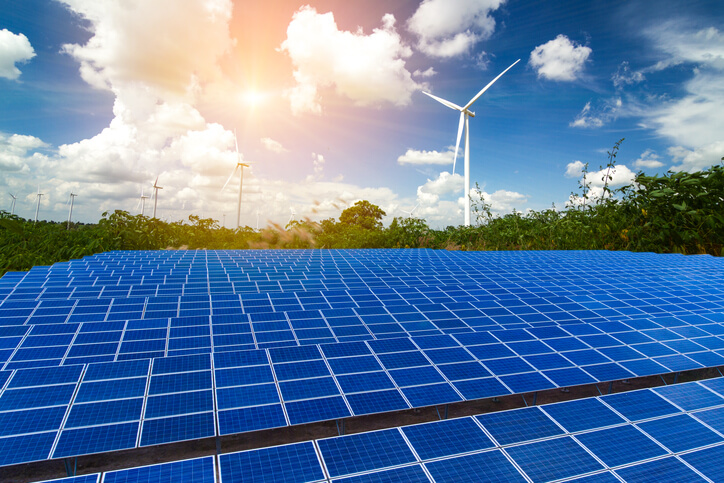The share of domestic electrical production by renewable energy has now greatly eclipsed earlier projections by the U.S. Energy Information Administration (EIA), the SUN DAY campaign has revealed.
According to the nonprofit organization, in EIA’s 2012 Annual Energy Outlook, the agency forecast that renewable energy generation would increase by 77% from 2010 to 2025 (from 10% to 15%). In addition, the share of total electricity generation from non-hydro renewables would grow from roughly 4% in 2010 to 9% in 2035.
If one assumes growth were to continue at about the same annual pace as during the 25-year EIA forecast period (2010-2035), renewables would not be expected to reach 19.35% until roughly the year 2057 – forty years from now, the organization says.
EIA’s 2012 report further forecast that wind capacity would increase from 39 GW in 2010 to 70 GW in 2035 and that solar would reach 24 GW of capacity in 2035.
In reality, says SUN DAY, citing the Federal Energy Regulatory Commission’s (FERC) latest Energy Infrastructure Update, which includes data for the first three months of 2017, wind generating capacity already totals 84.59 GW, while utility-scale solar capacity has reached 25.84 GW (not including distributed small-scale systems, such as rooftop solar).
Moreover, the latest issue of EIA’s Electric Power Monthly (with data through March 31) reveals that renewable energy sources (biomass, geothermal, hydropower, solar [including small-scale PV] and wind) accounted for 19.35% of net U.S. electrical generation during the first quarter of 2017. Of this, conventional hydropower accounted for 8.67%, followed by wind (7.10%), biomass (1.64%), solar (1.47%) and geothermal (0.47%). Combined, non-hydro renewables accounted for 10.68% of total generation.
“Not only has renewable energy’s share of total domestic electrical generation nearly doubled in the past seven years – it has reached a level of output that EIA, just five years ago, did not anticipate happening for another four decades,” states Ken Bossong, executive director of the SUN DAY Campaign. “While one might conclude that EIA’s methodology is seriously flawed, it is also safe to say that renewables – especially solar and wind – by now providing almost one-fifth of the nation’s electrical production, are vastly exceeding expectations and breaking records at an astonishing pace.”
According to the group, this is clearly evidenced by comparing 2017 to 2016. During the first quarter of 2016, renewables provided 17.23% of total generation versus 19.35% in 2017, meaning actual generation by renewables is 9.70% greater than it was just a year ago.
In particular, solar (solar thermal, utility-scale PV and distributed PV) has ballooned by 34.1%, wind has expanded by 11.4%, conventional hydropower has grown by 7.7% and geothermal has increased by 3.2%. Only utility-scale biomass has declined year-on-year (by 1.6%).





“During the first quarter of 2016, renewables provided 17.23% of total generation versus 19.35% in 2017, meaning actual generation by renewables is 9.70% greater than it was just a year ago.”
It would be nice to have a climate corrected value to identify what is the actual renewable capacity growth.